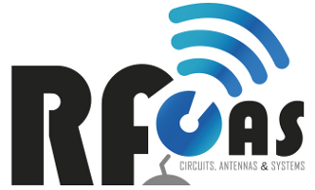| Abstract | Alternative interpretation of resonance of two-apertures iris in terms of the excitation of a TEM field of the structure was proposed by the authors of this contribution at (2003 USNC/URSI Symp., 226). This alternative interpretation proposed is very simple and useful to design bandpass filters with some improved stopband attenuation as it has been proposed at (L. Mospan, VIII Int. Conf. MMET, 503-505, 2000) and more recently at (A A Kirilenko, MSMW'2001 Symposium, 690-692). Moreover, this interpretation could be useful to prevent some spurious resonances that arise at some rectangular waveguide devices, therefore helping the designer to improve their electrical performances. In this paper, with the main aim to confirm our alternative interpretation of the resonance in terms of a TEM field excitation, we consider a modification of the previous ones: a new iris structure composed by inclined multi-aperture rectangulars. The single inclined aperture was analytically analysed at (R Yang and A S Omar, IEEE Trans. MTT- 41, 1461-1463), and the inclined multi-aperture iris by means of the Generalised Scattering Matrix of generalised 2-port discontinuity concept (J M Rebollar, IEE Proc., 1-7, 1988). The analysis of the scattering parameters joint to a visualisation of the electromagnetic field vectors in the structure are employed to discuss and validate the interpretation of the resonance. As a first example, an iris with only two rectangular apertures is considered. The excitation of the only one TEM-resonance is analysed vs. the inclination between the apertures and the waveguide walls. A second example of an iris with three rectangular apertures is analysed too. The excitation of the two TEM-resonances of this iris it is also studied. Quantitative results for the resonance frequency positions and field plots at these frequency points for the above mentioned examples will be presented. The obtained results for the inclined two/three-apertures irises validate the interpretation of resonances in terms of the excited TEM fields. |


